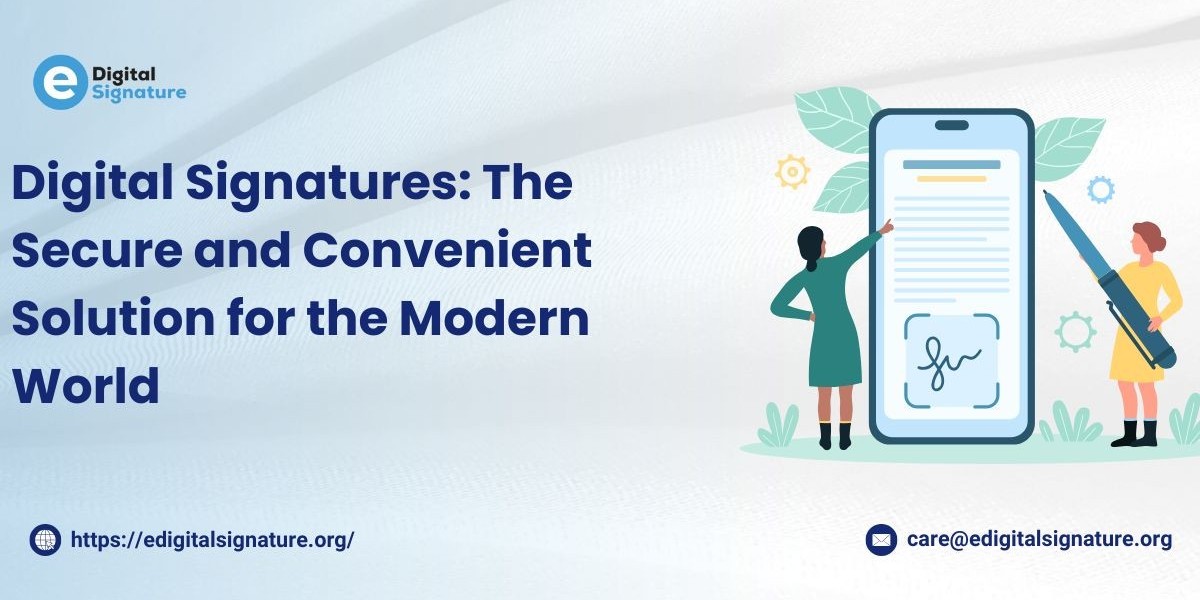Introduction
In today’s fast-paced, digital-first world, the need for secure, reliable, and efficient ways to conduct business and personal transactions is more critical than ever. From signing contracts to validating documents, the traditional pen-and-paper method is becoming increasingly outdated. With the rise of digital transactions, digital signatures have emerged as a powerful solution that ensures both security and convenience. In this blog, we’ll dive into what digital signature are, how they work, and why they are the go-to solution for a wide range of digital transactions in the modern world.
What Are Digital Signatures?
A digital signature is a type of electronic signature that provides a secure, encrypted method to validate the authenticity of digital messages or documents. Unlike traditional handwritten signatures, which can be easily forged, digital signatures use sophisticated cryptographic techniques to ensure the integrity of the signed document and the identity of the signer.
The primary function of a digital signature is to verify:
Authentication: It confirms that the person signing the document is indeed who they say they are.
Integrity: It ensures that the document has not been altered after it was signed.
Non-repudiation: It prevents the signer from denying their actions, as the signature can be verified independently.
In simpler terms, a digital signature is like a digital fingerprint that makes sure the document has not been tampered with and that the person signing it is accountable for their actions.
How Do Digital Signatures Work?
Digital signatures work based on public-key cryptography, which involves two keys: a private key and a public key. Here’s how the process typically works:
Key Generation: The signer creates a private-public key pair. The private key is kept secure, while the public key is shared for verification.
Signing the Document: The signer uses their private key to generate a unique hash of the document, then encrypts it to create the digital signature.
Verification: The recipient uses the public key to decrypt the hash. If the decrypted hash matches the document’s hash, it confirms the signature’s authenticity and integrity.
By using this method, digital signatures ensure that the document remains secure, the identity of the signer is verified, and the document cannot be altered after signing.
Why Are Digital Signatures Important?
1. Enhanced Security
In a world where data breaches and cyberattacks are becoming increasingly common, security is paramount. Digital signatures use encryption and hashing techniques to ensure that documents are secure from tampering. The use of private-public key pairs makes it almost impossible for anyone to forge or alter the document without detection. Additionally, digital signatures often include a timestamp, further enhancing the document’s security by showing exactly when it was signed.
2. Time and Cost Savings
In traditional business transactions, the process of signing documents often involves printing, scanning, and mailing physical copies. This process can be time-consuming and costly. Digital signatures eliminate the need for physical paperwork, speeding up the process and reducing overhead costs. Moreover, they allow businesses to complete contracts, agreements, and approvals in real time, improving efficiency and reducing delays.
3. Legal Validity
Digital signatures are legally binding in many countries. In the U.S., the ESIGN Act and UETA make them enforceable, while the EU’s eIDAS regulation recognizes their legal validity. This gives digital signatures the same weight as handwritten ones, making them a powerful tool for businesses and individuals.
4. Accessibility and Convenience
With a digital signature, there’s no need to be physically present to sign a document. This is especially important in today’s global economy, where people often work remotely or conduct business across borders. Digital signatures allow users to sign documents anywhere, anytime, as long as they have access to the internet. This level of accessibility makes digital signatures an invaluable tool for businesses operating in a globalized environment.
5. Environmental Impact
Digital signatures contribute to a greener planet by reducing the need for paper, ink, and physical document transportation. This helps conserve resources and minimize waste. In 2025, as sustainability becomes a priority for many organizations, adopting digital signatures aligns with CSR goals to reduce carbon footprints.
Use Cases of Digital Signatures
1. Business Contracts
Digital signatures are increasingly used for service agreements and employee contracts, enabling quick, secure, and paperless business deals. This accelerates decision-making and supports faster business growth.
2. Legal Documents
In the legal industry, digital signatures make documents like wills, trusts, and settlement agreements secure and legally binding, offering higher protection than traditional methods.
3. Government Transactions
Governments use digital signatures for tax filings, voter registration, and electronic voting, improving efficiency, reducing fraud risks, and simplifying citizen interactions.
4. Financial Services
Banks and financial institutions adopt digital signatures for loan applications, account openings, and investments, ensuring secure, legally binding transactions while protecting sensitive data.
Legal and Regulatory Framework
Digital signatures are governed by specific laws and regulations that ensure their legitimacy:
eIDAS (EU): The European Union’s eIDAS regulation ensures the recognition of electronic signatures and provides a clear framework for their legal validity in cross-border transactions.
ESIGN and UETA (US): In the United States, the ESIGN Act and UETA ensure that digital signatures are legally enforceable in business transactions.
IT Act (India): The Information Technology Act, of 2000 in India provides a framework for the legality of digital signatures and electronic records.
These laws establish the legal standing of digital signatures and set guidelines for their use in various jurisdictions.
Suggested Read – Class 3 Digital Signature Certificate For eTender
Conclusion
As the world becomes more digitized, the need for secure, efficient, and reliable methods of conducting business is more critical than ever. Digital signatures provide the perfect solution, offering enhanced security, legal validity, and the convenience of paperless transactions. They are not only a tool for reducing costs and time but also play a key role in increasing trust and accountability in digital business processes. With their growing adoption across various sectors, digital signatures are undoubtedly the future of secure, efficient, and sustainable transactions in the modern world.
















